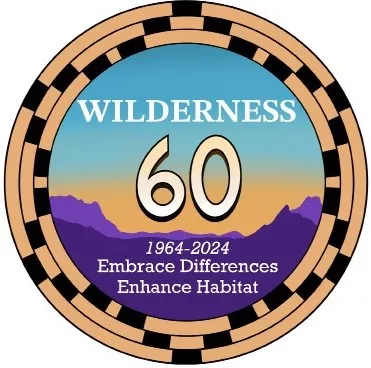
The 60th anniversary of the Wilderness Act and New Jersey Wilderness Areas On September 3, 1964 President Lyndon B. Johnson signed the Wilderness Act into law – establishing a National Wilderness Preservation System -- “for the use and enjoyment of the American people.” The Act provided for Congress to add new areas to the system.
During 2024, as the Wilderness Act turns 60, we reflect on the historic value of this major American cultural and environmental landmark. Sierra Club, other wilderness groups, and the four federal wilderness managing agencies will use the big anniversary to publicize wilderness values and to educate a broader public about the benefits of wilderness.
The 1964 Wilderness Act declared it to be the policy of our nation to “to secure for the American people of present and future generations the benefits of an enduring resource of wilderness”. Wilderness designation provides the strongest and most permanent protection of our laws for values such as adventure, solitude, spiritual communion with and respect for nature, a respite from the pressures of civilization, clean air and water, scenery, wildlife, and scientific understanding of how the natural world works when left alone--free from human control--or ”untrammeled”. Today, our national 30 by 30 campaign points to an ever more urgent need to use wilderness to preserve threatened wildlife habitat. And today, working with Native American tribes and other diverse groups, we seek to make wilderness more inclusive and welcoming to all.
Only Congress can designate wilderness—by law –and it was the voices of Americans that convinced Congress over these 60 years to expand the initial 9.1 million acres of wilderness in 54 national forest areas in 13 states to 111 million acres with 803 areas in 44 states and Puerto Rico -- in national parks, national forests, national wildlife refuges and western Bureau of Land Management lands.
Uniquely American, wilderness is a great social and environmental achievement by which our nation agreed to restrain in special wild places the “normal” trend toward development – so that nature can dominate here forever—with people who live or visit here doing so in profound harmony with nature.
While Sierra Club began long before the Wilderness Act was signed, the basic principles underlying the Act are also the founding principles of the Sierra Club--preserving wild places free from development. And Sierra Club has played a big role in the national wilderness effort from the start--hosting a series of biennial wilderness conferences and working hard to pass the 1964 bill. The Sierra Club and its outings program continue to draw attention to places that we seek to protect.
In 1964, in the original act, only two states east of the Mississippi had wilderness designated—New Hamp shire and North Carolina. New Jersey got its first federal wilderness, Great Swamp, in 1968, notable as the first Department of the Interior Wilderness in the eastern half of the nation. Today New Jersey has two wilderness areas, Great Swamp and Brigantine, both managed by the U.S. Fish & Wildlife Service, as part of the national wildlife refuge system. Following are brief descriptions of these two areas:
1) Great Swamp National Wildlife Refuge Wilderness: The wilderness was designated in 1968, and it has 3,660 acres. Roughly 25,000 years ago, where the Wisconsin Glacier reached its farthest point south and stopped, the creation of the Great Swamp began. With cattail marshes, wet meadows, swamp woodlands, and ridges thick with oak, beech, and laurel, Great Swamp provides a home for 39 species of mammals including mice, moles, skunks, raccoons, otters, foxes, white-tailed deer, and the endangered Indiana bat. Migratory birds see Great Swamp as a “nest and rest” (244 species have been identified). Numerous reptiles and amphibians have taken up res-idence, including rare bog turtles, wood turtles, and blue-spotted salamanders.The Great Swamp National Wildlife Refuge was established in 1960 following grassroots action to save the area from being developed into a major metropolitan airport. In 1968, the eastern half of the Refuge was designated as the very first wilderness within the Department of the Interior. About 8.5 miles of primitive trails provide access.
2) Brigantine Wilderness: Congress designated the Brigantine Wilderness in 1975, with 6,681 acres. It is the wild, roadless portion of the Edwin B. Forsythe National Wildlife Refuge, which protects more than 48,000 acres of southern New Jersey coastal habitats. More than 82 percent of Forsythe Refuge is wetlands. It is a tidal wetland and shallow bay habitat, and is on one of the most active flyways for migratory waterbirds in North America. Birdwatchers, binoculars in hand, have zoomed in on close to 300 species, including Atlantic brant and American black duck.The Wilderness protects Holgate and Little Beaches, two of the few remaining barrier beaches in New Jersey. Grasses on these shores stabilize the fragile dunes and safeguard the rare piping plover, black skimmer, and least tern.